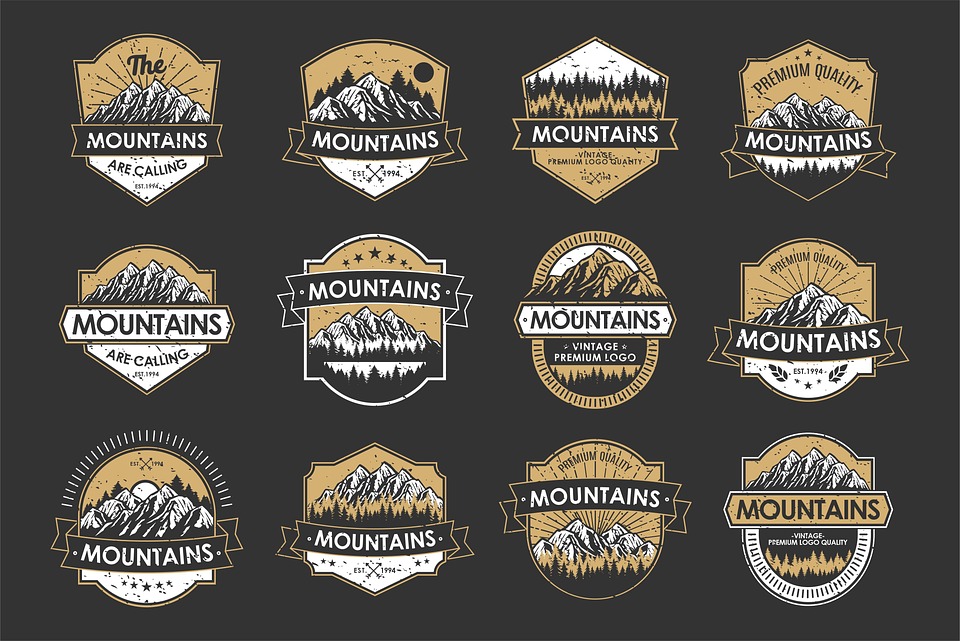The Importance of Scalability in Logo Design: Why Your Logo Needs to Look Good in Any Size
When it comes to logo design, most people focus on the visual appeal and creativity of the design itself. While these aspects are undoubtedly crucial, many designers overlook a crucial aspect of logo design: scalability. In today’s digital age, where logos are often used in various formats and sizes, a logo that is not scalable can be a major setback for a brand.
What is Scalability in Logo Design?
Scalability in logo design refers to the ability of a logo to maintain its clarity, legibility, and overall impact when displayed in different sizes, resolutions, and formats. A scalable logo is one that can be easily resized, stretched, or compressed without losing its integrity or appearing distorted. This means that a logo should look just as good in a small icon on a smartphone as it does on a billboard or merchandise.
Why is Scalability Important?
In today’s digital landscape, logos are used in a wide range of formats and sizes, including:
- Social media profiles (small icons)
- Website headers and footers (medium-sized logos)
- Print materials (business cards, brochures, etc.)
- Outdoor advertising (billboards, signs, etc.)
- Merchandise (t-shirts, mugs, etc.)
If a logo is not scalable, it may appear:
- Distorted or blurry when enlarged or reduced
- Fuzzy or pixelated when displayed on low-resolution screens
- Hard to read or recognize when displayed in small sizes
The Consequences of Non-Scalable Logos
Non-scalable logos can have serious consequences for a brand, including:
- Brand recognition: A logo that is not scalable can undermine a brand’s identity and make it harder for customers to recognize and remember the brand.
- Consistency: Non-scalable logos can lead to inconsistencies in branding across different platforms and formats, which can harm a brand’s reputation and confuse customers.
- Professionalism: A logo that looks poor or distorted can undermine a brand’s credibility and professionalism, leading to negative perceptions and loss of trust.
Best Practices for Scalable Logo Design
To ensure that your logo is scalable and looks good in any size, follow these best practices:
- Keep it Simple: Avoid complex designs that may lose detail or clarity when resized. Opt for simple, clean, and bold designs that can be easily adapted to different formats.
- Use Vector Graphics: Vector graphics are scalable by nature and can be easily resized without losing quality. Adobe Illustrator is a popular vector graphics editor that is ideal for creating scalable logos.
- Design for the Smallest Size: Design your logo with the smallest size in mind. A logo that looks good in a small size is more likely to look good in larger sizes as well.
- Test Your Logo: Test your logo in different sizes, resolutions, and formats to ensure it remains clear and legible.
- Collaborate with Other Designers: Work with other designers or get feedback from colleagues to ensure your logo is scalable and meets the requirements of different formats and sizes.
Conclusion
In conclusion, scalability is a crucial aspect of logo design that should not be overlooked. A scalable logo is one that can be easily adapted to different sizes, resolutions, and formats without losing its clarity or impact. By following best practices and keeping scalability in mind, designers can create logos that are both visually appealing and effective in promoting a brand’s identity.
#Importance #Scalability #Logo #Design #Logo #Good #Size





Die Freispiele werden für ein von Ihnen aus der Liste ausgewähltes
Slot-Spiel hinzugefügt. Entdecken Sie die aufregende Welt des Online-Glücksspiels und
finden Sie Ihre Favoriten. WooCasino bietet eine riesige
Auswahl an Spielen, die von den besten Softwareanbietern der Branche entwickelt wurden. Tauchen Sie ein in die
Welt des Online-Glücksspiels und finden Sie Ihre Favoriten.
Entdecken Sie das aufregende Universum von Slots,
Tischspielen und weiteren mit speziellen Deals, die für Woo casino Spieler maßgeschneidert sind!
Profitieren Sie von lukrativen Einzahlungsboni, exklusivem Cashback
sowie dem Nervenkitzel von Freispielen und speziellen Aktionen. Mit
einer breiten Palette an Slots, Tischspielen und Live-Dealer-Spielen liefert Woo casino nicht nur Spannung, sondern auch absolute
Sicherheit dank seiner Lizenzierung und Regulierung. Was
mir an Woo besonders gefällt, sind die vielen verschiedenen Boni, vor allem
der großzügige Willkommensbonus mit Freispielen. Das hilft ihnen, mit der Möglichkeit zu
spielen, die höchsten Auszahlungen zu erreichen, oder einfach mit höheren Gewinnen zu starten.
Um Ihre Spielerfahrungen zu verschönern, bietet das Woo Casino täglich
ein Spielautomaten-Turnier an. Es ist legal tätig, nachdem es eine Lizenz von der Gerichtsbarkeit
von Curaçao erhalten hat, die seine Konformität mit den Gesetzen belegt.
Das Woo Casino ist eine Unterhaltungsplattform und bietet faire Casino-Spiele, die
sich an die Gesetze halten. Woo bietet im Moment insgesamt 7 verschiedene Turniere
an, bei denen es einen Woo Casino Bonus ohne Einzahlung gibt.
References:
https://online-spielhallen.de/smokace-casino-auszahlung-ihr-umfassender-leitfaden/
But he couldn’t do it without the support of the Tasmanian people who not only voted for
the development but became part of the brand and
Wrest Point story. It was later purchased by Arthur Drysdale
who created Tasmania’s prestigious international hotel, the Wrest Point Riviera.
In doing so, Federal Group became part of Tasmanian history
and the birth of Australia’s first casino unfolded.
Over five decades the Group busied themselves operating some
of the country’s finest hotels including Savoy Plaza and The Windsor, before turning their
attention to Tasmania, purchasing Wrest Point Riviera Hotel in Sandy Bay.
And neither do the offers and events! Sip something special at our bars before a night of live
entertainment.
For helpful tips on what to keep in mind when on the gaming floor, read our guidelines below.
While at Wrest Point Casino, please consider your spending on games and bets and gamble
responsibly. Place bets on the table in front of the wheel,
choosing the symbol you think the wheel will land on. You can bet on options such as red / black, odds /
evens, dozens, high / low numbers and even streets
and corners.
References:
https://blackcoin.co/casino-world-a-comprehensive-overview/
Some alternative phrases to ‘most important thing’ include top priority, primary concern, essential matter, critical issue,
and key focus. Some synonyms for ‘significant’ include important,
meaningful, substantial, crucial, critical,
momentous, and notable. Other ways to say ‘important’ include significant, essential, vital,
critical, key, fundamental, and necessary.
Some show need, some show impact, and some show urgency, so one word may not fit every sentence.
If it matters because many people respect it, choose notable or influential.
If it matters because it comes first, pick
key, main, or primary. If it matters because you need it, choose essential, necessary, or vital.
It can be used to emphasize the essential nature of something or
someone. So, don’t be afraid to explore the thesaurus
– your writing will thank you for it! Synonyms are powerful tools that
can add richness and precision to your writing. High-priority
References:
https://blackcoin.co/crownplay-casino-majestic-gambling-for-australia/
online casino paypal
References:
chefstronomy.co.za
paypal casinos
References:
precisionscans.net